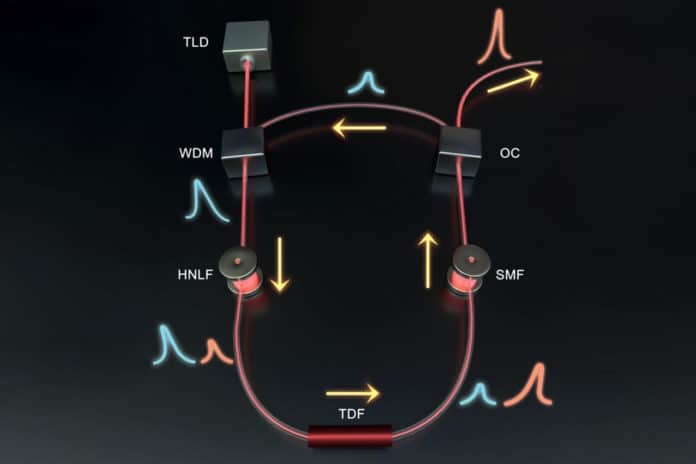Water is a vital component closely relevant to biological metabolism. Mapping the water content would be beneficial for analyzing the biological and pathological properties of the cells, tissues, and organs.
Ultrasound images are a powerful biological and biomedical sciences tool for disease detection.
However, it was challenging to image the water content in the deep tissue with micron-level spatial resolution due to the lack of an efficient laser source.
An advancement in this technique is photoacoustic imaging (PAI). It is where the skin or tissue absorbs pulses of laser light. The thermoelastic expansion of the skin or tissue emits sound, which is processed by the machinery to develop high-resolution images. Recent developments have theorized the existence of vibrational PAI, which could penetrate further into the skin.
In a new paper published in eLight, a team of scientists led by Professor Kenneth K. Y. Wong of the University of Hong Kong has developed a high-power hybrid laser emitter designed to penetrate deep into the skin.
The paper, titled “Hybrid optical parametrically-oscillating emitter at 1930 nm for volumetric photoacoustic imaging of water content,” sought to map out the water content in the body to analyze the biological properties of cells, tissues, and organs.
New Invention
The PAI technique needs to generate high-resolution images with a low signal-to-noise ratio (SNR). To achieve this goal, the laser needs to have a high laser pulse energy, fast pulse repetition rate, and accurate wavelength tunability. Water absorbs energy at a relatively low wavelength of about 1000 nm, which usually requires milli-joule level pulse energy. That sort of energy can burn the skin, while the lasers that operate at that level are expensive.
The research team developed a high-power all-fiber hybrid optical parametrically-oscillating emitter (HOPE) at 1930 nm. It is the best wavelength for determining the water content of tissue and fats. The HOPE emits laser pulses every 15 nanoseconds (ns), with a 1 nm bandwidth. The research team verified the performance of their system through a proof-of-concept optical-resolution PA microscope system.
The team found that the 1930 nm system improved penetration depth by 2.4 mm. The research team owed it to reducing photon scattering in the tissue within the shorter wavelength near-infrared lasers. The improved penetration ability could facilitate measurable imaging of water content in the deep tissue.
Advantages of study:
The study reported a novel high-power HOPE at 1930 nm.
With the HOPE system, researchers developed a vibrational optical-resolution photoacoustic microscopy system to detect the O–H bond in the water, aqueous sample, and biological tissue in vitro.
It could image the water distribution in the deep tissue with micron-level spatial resolution, fine SNR, improved penetration depth, and suppressed artifact signal.
Futuristic view of study
Better measuring of water content could improve the quality of medical diagnosis going forward.
These excellent advantages could help this technique open a broad avenue for biological research and disease diagnosis.
Journal Reference
- Jiawei Shi, Mingsheng Li, Huajun Tang, Jiqiang Kang, Najia Sharmin, Amir Rosenthal & Kenneth K. Y. Wong. Hybrid optical parametrically-oscillating emitter at 1930 nm for volumetric photoacoustic imaging of water content. eLight 2, 6 (2022). DOI: 10.1186/s43593-022-00014-2
